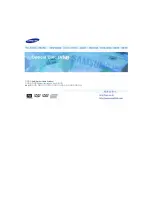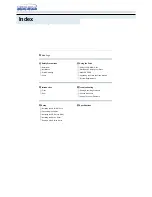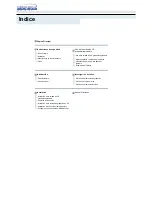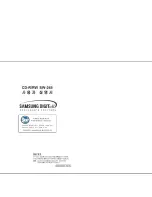
D
D
C
C
S
S
8
8
1
1
0
0
V
V
2
2
D
D
i
i
g
g
i
i
t
t
a
a
l
l
D
D
C
C
S
S
e
e
r
r
v
v
o
o
D
D
r
r
i
i
v
v
e
e
r
r
M
M
a
a
n
n
u
u
a
a
l
l
R
R
e
e
v
v
1
1
.
.
0
0
Tel: (86)755-26434369
44
Website: www.leadshine.com
Figure 6-33: Increase Kaff to 5000 for quick response
Figure 6-34: Increase Kaff to 10000 for quick response
Remember that tuning the servo is to get satisfying performances, getting the best
performances of the servo is a time consuming work. So if the servo performance
can meet your application requirements, then the easier tuning way the better. Just
like if the performances of the products can meet your application requirements, then
the cheaper the better.
Kaff = 5000
Position following error = 132
Kaff = 10000
Position following error =86
D
D
C
C
S
S
8
8
1
1
0
0
V
V
2
2
D
D
i
i
g
g
i
i
t
t
a
a
l
l
D
D
C
C
S
S
e
e
r
r
v
v
o
o
D
D
r
r
i
i
v
v
e
e
r
r
M
M
a
a
n
n
u
u
a
a
l
l
R
R
e
e
v
v
1
1
.
.
0
0
Tel: (86)755-26434369
45
Website: www.leadshine.com
7. Using Tips
Sequence Chart of Control Signals
In order to avoid some fault operations and deviations, PUL, DIR and EN should
abide by some rules, shown as the following figure:
Figure 7-1: Sequence chart of control signals
Notes:
a)
t
1
: EN must be ahead of DIR by at least 5
µ
s. Usually, ENA is NC (not
connected). See
Connections
section for more information.
b) t
2
: DIR must be ahead of PUL effective edge by at least 5
µ
s to ensure
correct direction.
c)
t
3
: Pulse width not less than 2.5s;
d) t
4
: Low level width not less than 2.5s.
Protection Functions
To improve reliability, the driver incorporates some built-in protection functions.
The DCS810V2 uses one RED LED to indicate what protection has been activated.
The periodic time of RED is 5 s (seconds), and how many times the RED turns on
indicates what protection has been activated. Because only one protection can be





































